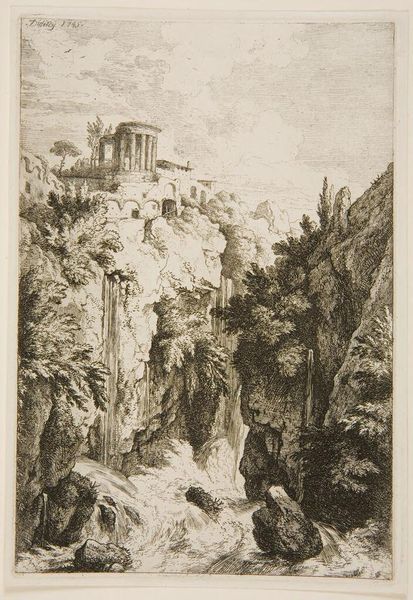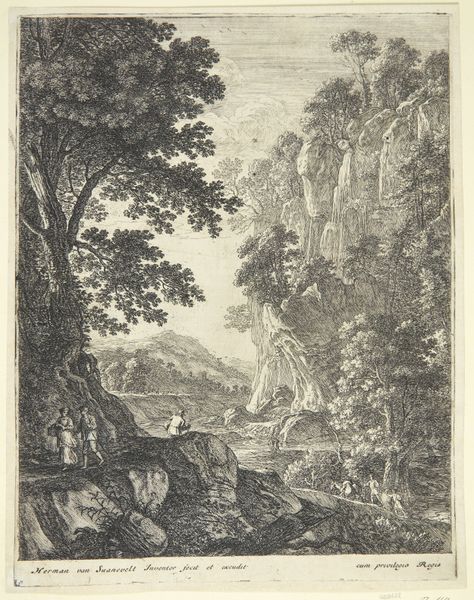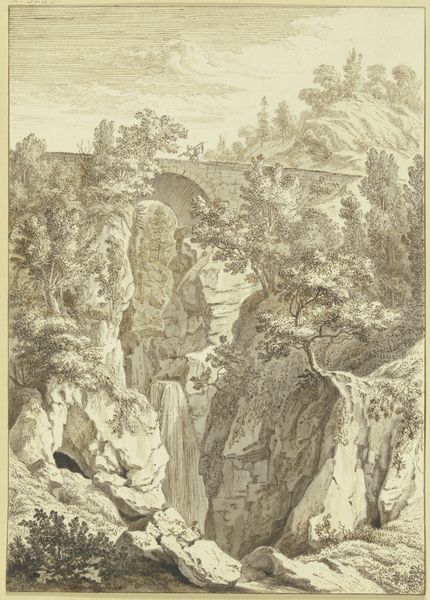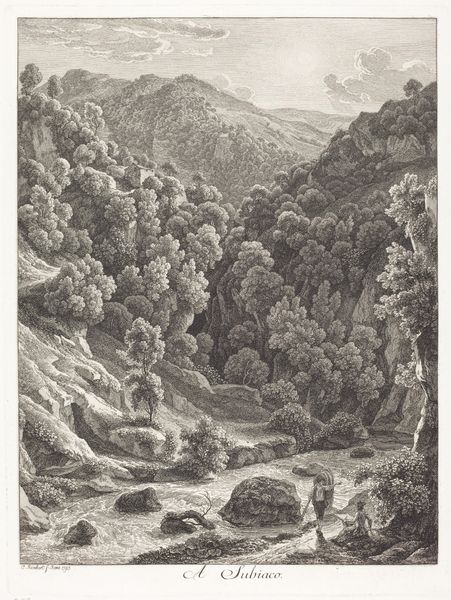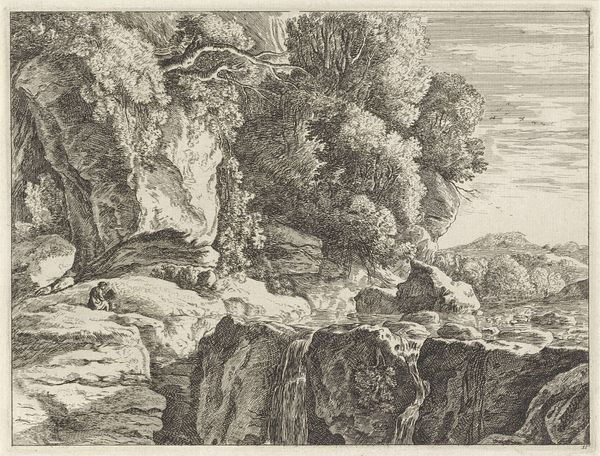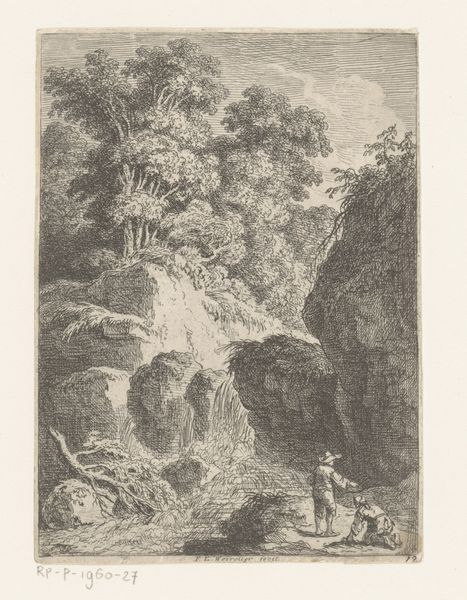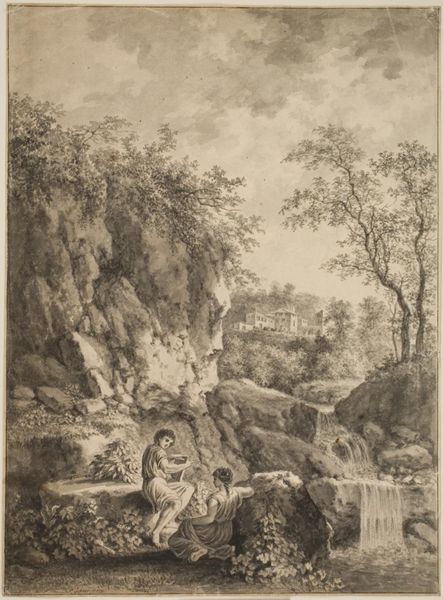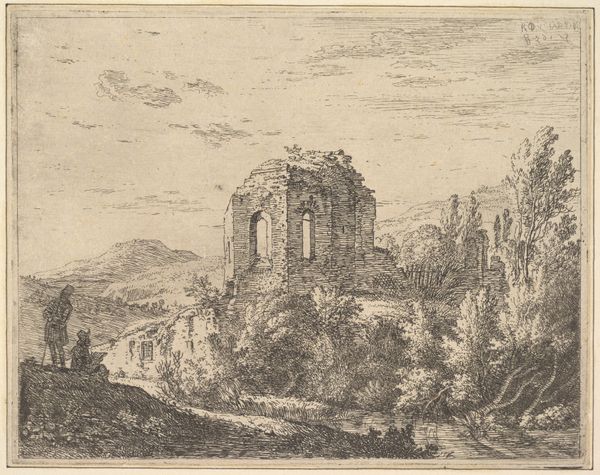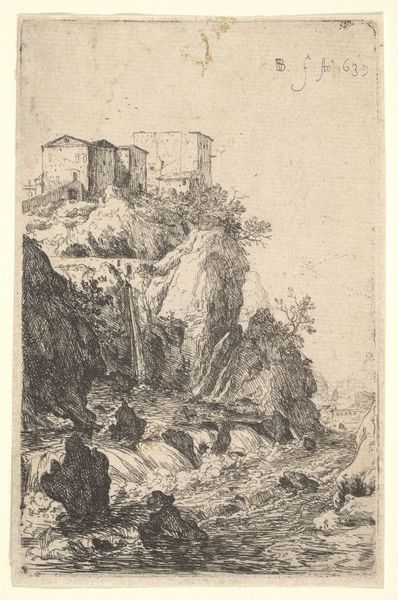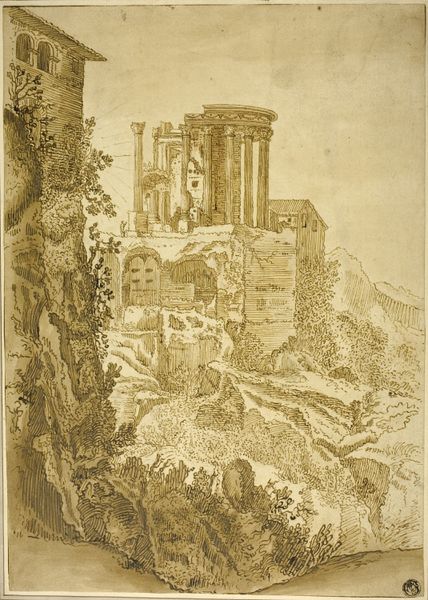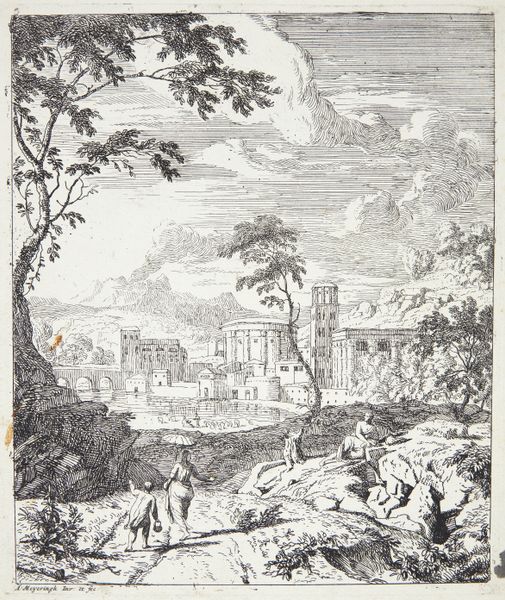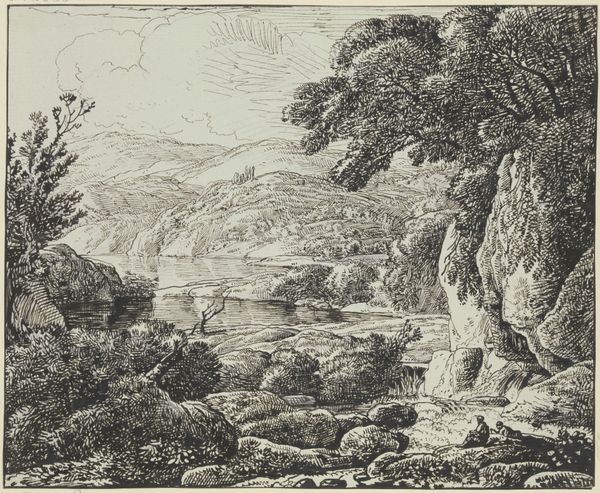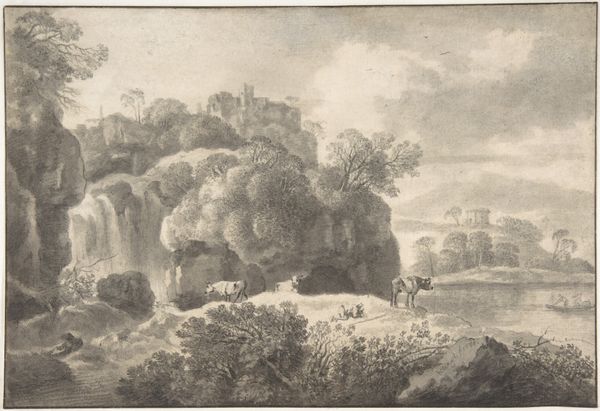
print, etching, architecture
#
baroque
# print
#
etching
#
landscape
#
architecture
Copyright: National Gallery of Art: CC0 1.0
Curator: This etching by Christian Wilhelm Ernst Dietrich, dating from around 1745, presents the Temple of the Sibyl at Tivoli. What are your initial impressions? Editor: A sense of drama! The high vantage point, the rushing water...it’s visually striking, certainly meant to elicit a strong response. And the etching itself feels incredibly delicate, juxtaposed against that raw energy. Curator: The Temple itself is interesting, situated on a precipice—classical architecture, almost as an emblem, overlooking untamed nature. Do you find any significance in that position? Editor: Absolutely. I'm immediately drawn to how Dietrich crafts this contrast. The hand-carved architectural element in dialogue with the landscape emphasizes how constructed spaces have historically engaged with natural resources, shaped environments, and labor, and also our perception of divinity or, more simply, shelter. Curator: That intersection between natural and man-made recalls the antique and the modern. The Temple to the Sibyl historically would have been dedicated to prophecy and a connection to the divine feminine, now captured and framed through Dietrich's modern perspective. Does the process of etching affect how we approach this subject matter? Editor: Etching lends itself well to linear details, which you see beautifully here in the Temple's columns or the rocks by the waterfall. The whole printing process, requiring acids and specific paper types, suggests meticulous care – an appreciation for quality, craft, and its ability to represent natural forms or artifacts like a ruin, to a growing consumer middle-class market in 18th century Europe. Curator: The landscape isn't mere backdrop, is it? Those tiered, tumbling waterfalls and overgrown banks suggest layers of cultural memory or deep time—an untamed aspect. Editor: And in that "untamed aspect" are really traces of resource management of forests and of access to fresh water supplies – something etched even in what’s made of stone or other inert materials. This piece captures a key period as Europe reshaped its access and trade to natural resources around the globe. Curator: Fascinating perspectives. Ultimately, "Temple of the Sibyl, Tivoli" uses imagery familiar even today to ask enduring questions. Editor: Yes, whether those questions speak to social structures, artistic techniques, or just to nature itself, it's the intersection that leaves a lasting impression.
Comments
No comments
Be the first to comment and join the conversation on the ultimate creative platform.
